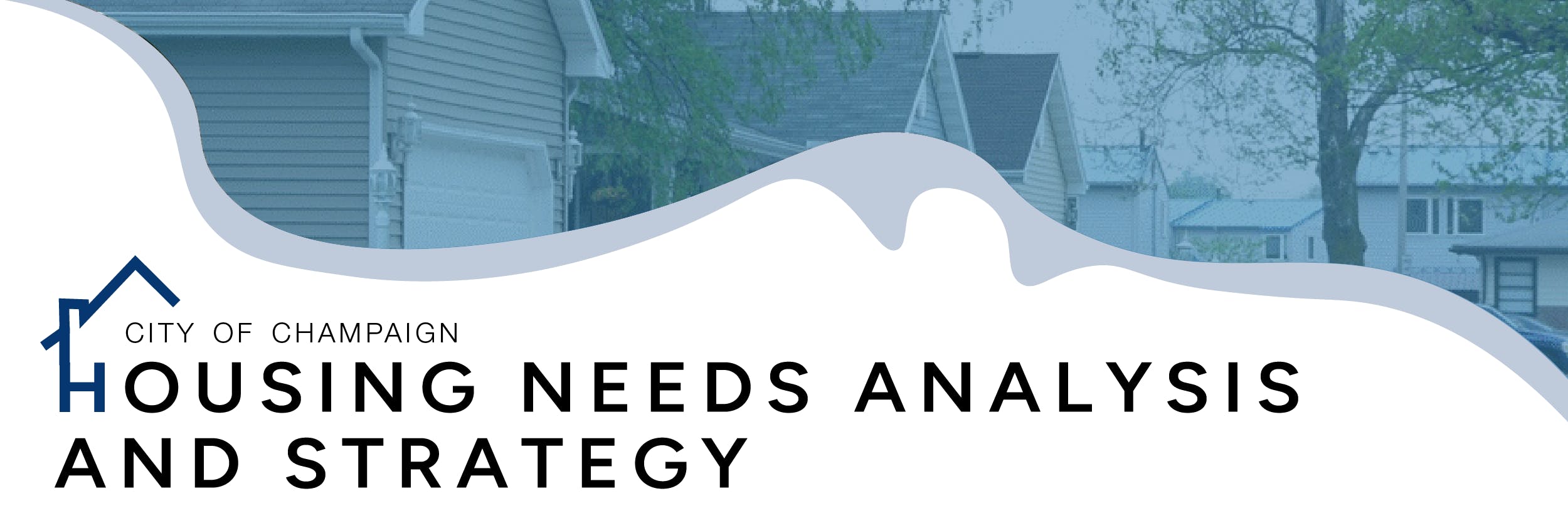Housing Needs Analysis & Strategy
No one understands Champaign’s housing challenges better than the people who call the city home. Share your input by taking the survey today.
* Both surveys are available in both English and Spanish
* A PDF Version of the survey is available here for download. If submitting a paper copy, please drop off or mail it to
Neighborhood Services Department
205 W. Park Avenue, Suite 100
Champaign, IL 61820
 Nationwide, there is a record-breaking number of individuals and families who are finding it increasingly difficult to obtain housing, whether renting an apartment or buying a house. Additionally, an increasing number of residents are becoming burdened by the cost of decent and safe housing. The City of Champaign is currently conducting a Housing Needs Analysis and Strategy to understand these challenges better. The purpose of the Housing Needs Analysis and Strategy is to understand and quantify Champaign's housing needs and propose a variety of strategies to meet them. In Champaign, the housing stock does not adequately meet the needs of residents, evidenced by the following data points:
Nationwide, there is a record-breaking number of individuals and families who are finding it increasingly difficult to obtain housing, whether renting an apartment or buying a house. Additionally, an increasing number of residents are becoming burdened by the cost of decent and safe housing. The City of Champaign is currently conducting a Housing Needs Analysis and Strategy to understand these challenges better. The purpose of the Housing Needs Analysis and Strategy is to understand and quantify Champaign's housing needs and propose a variety of strategies to meet them. In Champaign, the housing stock does not adequately meet the needs of residents, evidenced by the following data points:

 Issues in Champaign’s housing supply can be attributed to the increased cost to purchase and rent, a decrease in housing construction numbers, and a lack of housing choice and variety. This project will assess Champaign's housing stock and affordability levels and generate strategies to meet the identified housing needs in the form of tailored policies, programs, and initiatives. The Housing Needs Analysis and Strategy is being conducted with the assistance of a consulting firm, RDG Planning & Design.
Issues in Champaign’s housing supply can be attributed to the increased cost to purchase and rent, a decrease in housing construction numbers, and a lack of housing choice and variety. This project will assess Champaign's housing stock and affordability levels and generate strategies to meet the identified housing needs in the form of tailored policies, programs, and initiatives. The Housing Needs Analysis and Strategy is being conducted with the assistance of a consulting firm, RDG Planning & Design. What will be learned through this analysis?
- Champaign’s existing conditions in terms of housing stock, affordability levels, and resident demographics.
- How much housing is needed to fill these gaps in demand, and what type of housing would best fit residents’ needs.
- How to meet the identified housing needs with local strategies, recommended policies, and available funding sources.
We want to hear from you!
For this project to be successful, we need to hear from you! Take our online survey!








